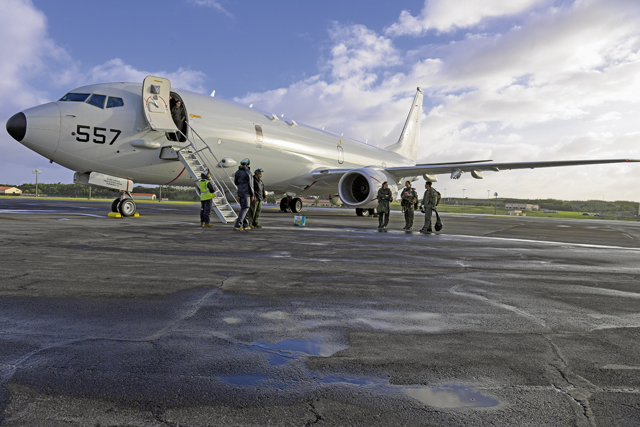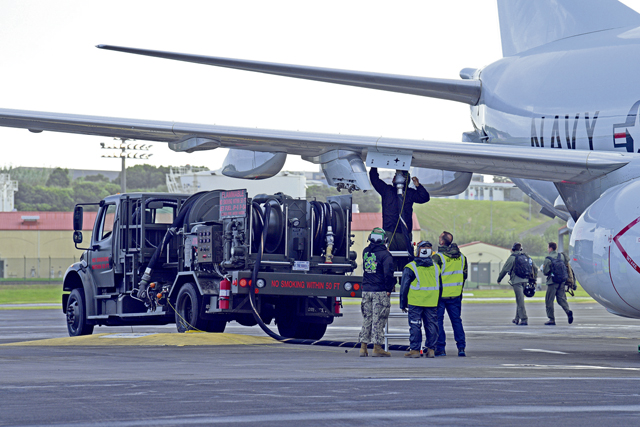
Lajes Field, which is hosted on the Portuguese Air Base 4, is home to the strategically located 65th Air Base Group. Due to the geographic location of Lajes Field, and the large size of its flightline, the base provides plenty of space to support transient aircraft.
“The strategic value of Lajes Field cannot be overstated,” said Col. Brian Hardeman, 65th Air Base Group commander. “Out of all the bases in USAFE, Lajes has the largest ramp size, 21 percent of the total ramp size in square miles, compared to any other base in Europe.”
The airfield has the ability to act as a strategic projection platform allowing bombers and fighters to maintain their distance outside of the threat ring, but within range to provide any necessary support the European Deterrence Initiative and Middle East operations.
Lajes Field is a hub that closes the gap in the Atlantic providing mission-critical support, such as centralized refueling, maintenance support and lodging, to transient aircraft utilizing the base. Members from the 65th ABG provide the necessary tools to keep the mission going.

“We support expeditionary forces as a strategically located checkpoint, executing all mission-essential requirements,” said Lt. Col. Andrew Standeford, 65th Air Base Squadron commander. “Our personnel provide critical ground maintenance support to multiple aircraft, from bombers and fighters to tankers and cargo.”
In addition to other supported agencies, Lajes Field provides the U.S Navy with a transient point to commute back and forth between the U.S. and any jump-off points, including Rota, Scotland and Sigonella. This location allows an opportunity to shift with the needs of the mission.
The U.S. Navy P-8A Poseidon is the premier long-range maritime anti-submarine warfare asset. The aircraft operates in anti-submarine warfare, anti-surface warfare, and intelligence, surveillance and reconnaissance. The aircraft has the capability of searching large areas of ocean and land quickly, at both high and low altitudes.
“We typically fly with a crew of nine people,” said U.S. Navy Cmdr. Matt Fannin, VP-4 executive officer. “We drop what is called a sonar buoy and listen for submarine frequencies and signatures that we can use to track adversarial submarines.”
The P-8A Poseidon is unique in that it is the only U.S. military asset capable of tracking submarines all over the world, and Lajes Field is a steppingstone for this and many other missions.
With the constant evolution of the world and its threats, Lajes Field continues to provide a strategic axis point for a strong joint force, which is paramount to stay ahead of future challenges.
“When we come here, we know that we will have what we need to complete the mission,” said Master Chief Petty Officer Rawley Lemmel, maintenance master chief petty officer. “At Lajes, we are a part of the U.S. Air Force family.”


